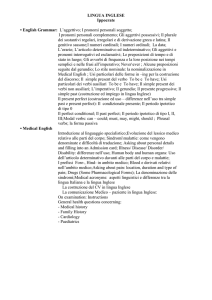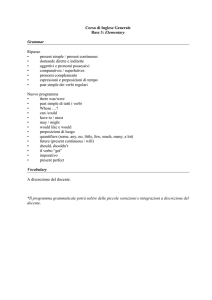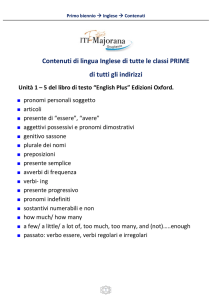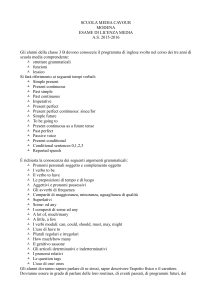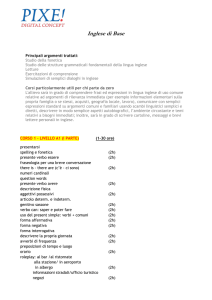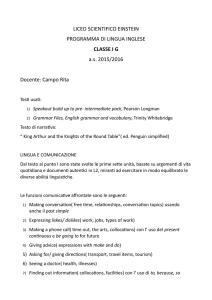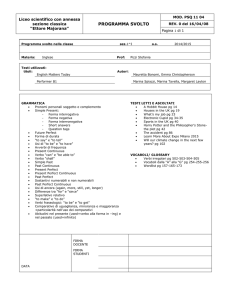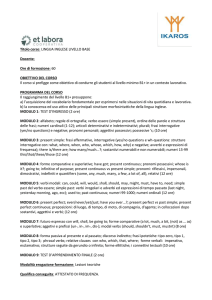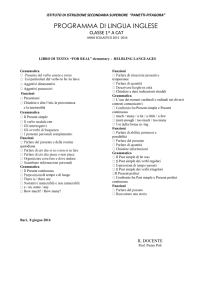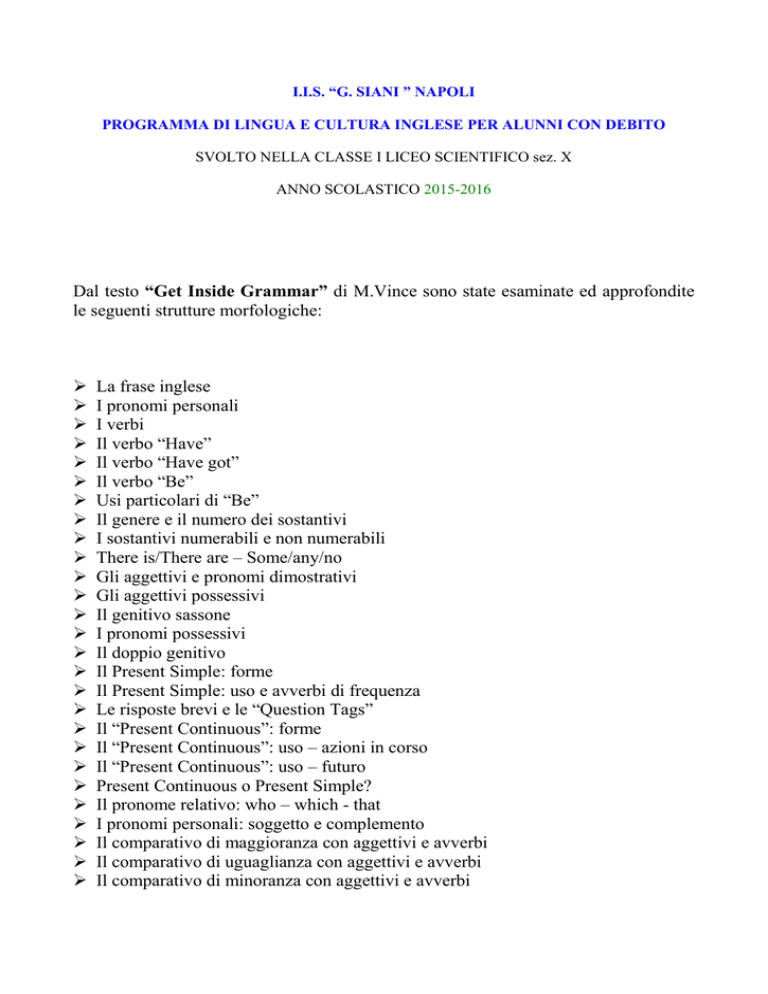
I.I.S. “G. SIANI ” NAPOLI
PROGRAMMA DI LINGUA E CULTURA INGLESE PER ALUNNI CON DEBITO
SVOLTO NELLA CLASSE I LICEO SCIENTIFICO sez. X
ANNO SCOLASTICO 2015-2016
Dal testo “Get Inside Grammar” di M.Vince sono state esaminate ed approfondite
le seguenti strutture morfologiche:
La frase inglese
I pronomi personali
I verbi
Il verbo “Have”
Il verbo “Have got”
Il verbo “Be”
Usi particolari di “Be”
Il genere e il numero dei sostantivi
I sostantivi numerabili e non numerabili
There is/There are – Some/any/no
Gli aggettivi e pronomi dimostrativi
Gli aggettivi possessivi
Il genitivo sassone
I pronomi possessivi
Il doppio genitivo
Il Present Simple: forme
Il Present Simple: uso e avverbi di frequenza
Le risposte brevi e le “Question Tags”
Il “Present Continuous”: forme
Il “Present Continuous”: uso – azioni in corso
Il “Present Continuous”: uso – futuro
Present Continuous o Present Simple?
Il pronome relativo: who – which - that
I pronomi personali: soggetto e complemento
Il comparativo di maggioranza con aggettivi e avverbi
Il comparativo di uguaglianza con aggettivi e avverbi
Il comparativo di minoranza con aggettivi e avverbi
A.
I comparativi irregolari
Il “Simple Past”: forme
Le risposte brevi e Question Tags
Il “Simple Past” del verbo “Be”
Il “Simple Past”: uso
Uso di Been/Gone
Il “Present Perfect”: forme
Il “Present Perfect”: uso – introduzione
Il “Present Perfect”: uso – azioni avvenute in un tempo non concluso
Il “Present Perfect”: uso – azioni avvenute in un tempo non specificato
Il “Present Perfect”: uso – azioni con conseguenze nel presente
Il “Past Perfect”: forme
Il “Past Perfect”: uso
Studio dei principali verbi irregolari
Napoli, 10 giugno 2016.
ll Professore: Aurelia Massimino


